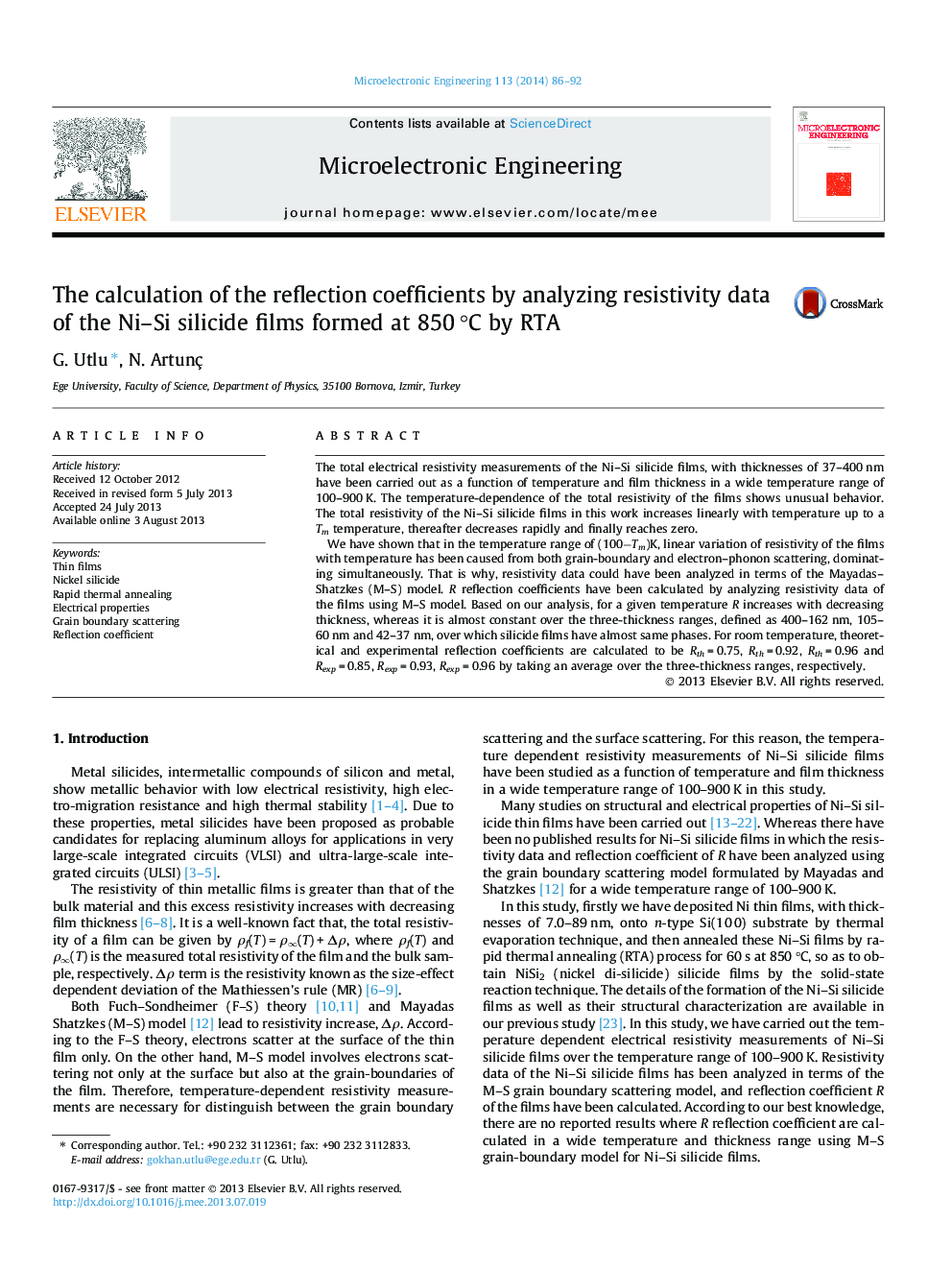| کد مقاله | کد نشریه | سال انتشار | مقاله انگلیسی | نسخه تمام متن |
|---|---|---|---|---|
| 539814 | 1450368 | 2014 | 7 صفحه PDF | دانلود رایگان |

• It is a systematic study of various thicknesses (37–400 nm) of Ni–Si silicide films.
• The temperature-dependent resistivity measurements of the films are studied.
• Resistivity variation of the films with temperature exhibits an unusual behavior.
• Grain-boundary scattering should be a dominant mechanism on our Ni–Si silicide films.
• Reflection coefficients have been found in a wide temperature and thickness range.
The total electrical resistivity measurements of the Ni–Si silicide films, with thicknesses of 37–400 nm have been carried out as a function of temperature and film thickness in a wide temperature range of 100–900 K. The temperature-dependence of the total resistivity of the films shows unusual behavior. The total resistivity of the Ni–Si silicide films in this work increases linearly with temperature up to a Tm temperature, thereafter decreases rapidly and finally reaches zero.We have shown that in the temperature range of (100−Tm)K, linear variation of resistivity of the films with temperature has been caused from both grain-boundary and electron–phonon scattering, dominating simultaneously. That is why, resistivity data could have been analyzed in terms of the Mayadas–Shatzkes (M–S) model. R reflection coefficients have been calculated by analyzing resistivity data of the films using M–S model. Based on our analysis, for a given temperature R increases with decreasing thickness, whereas it is almost constant over the three-thickness ranges, defined as 400–162 nm, 105–60 nm and 42–37 nm, over which silicide films have almost same phases. For room temperature, theoretical and experimental reflection coefficients are calculated to be Rth = 0.75, Rth = 0.92, Rth = 0.96 and Rexp = 0.85, Rexp = 0.93, Rexp = 0.96 by taking an average over the three-thickness ranges, respectively.
Figure optionsDownload as PowerPoint slide
Journal: Microelectronic Engineering - Volume 113, January 2014, Pages 86–92